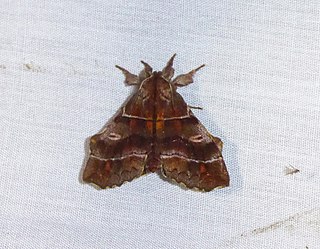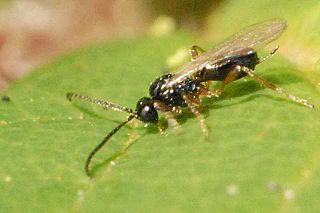
Bombycoidea is a superfamily of moths. It contains the silk moths, giant silk moths, sphinx moths, and relatives. The Lasiocampoidea are close relatives and were historically sometimes merged in this group. After many years of debate and shifting taxonomies, the most recent classifications treat the superfamily as containing 10 constituent families. Their larvae often exhibit horns.

The superfamily Membracoidea of sap-sucking true-bugs includes two of the largest families within what used to be called the "Homoptera": the leafhoppers (Cicadellidae) and the treehoppers (Membracidae). The other families in this group are quite small, and have, at various points, generally been included as members within other families, though they are all presently considered to be valid, monophyletic groups. The relict family Myerslopiidae is restricted to New Zealand and South America while the Melizoderidae consist of two genera restricted to South America. The great diversity of Neotropical taxa suggests that the group originated in that region.

Brahmaeidae is a family of insects in the order Lepidoptera, commonly known as Brahmin moths. It includes species formerly included in the family Lemoniidae.

The Bombycidae are a family of moths known as silkworm moths. The best-known species is Bombyx mori (Linnaeus), or domestic silk moth, native to northern China and domesticated for millennia. Another well-known species is Bombyx mandarina, also native to Asia.

Apatelodidae, the American silkworm moths, is a family of insects in the order Lepidoptera. They are a family within the superfamily Bombycoidea, though they have in the past been considered a subfamily of Bombycidae.

Lemonia dumi is a species of moth of the family Brahmaeidae. It is found in scattered populations in Central Europe.

Andraca is a genus of moths of the family Endromidae.
Falcogona is a genus of moths of the family Endromidae. It contains only one species, Falcogona gryphea, which is found in Vietnam.
Pseudandraca is a monotypic moth genus of the family Endromidae erected by Tamotsu Miyata in 1970. The genus was previously placed in the subfamily Prismostictinae of the family Bombycidae. Its only species, Pseudandraca gracilis, was described by Arthur Gardiner Butler in 1885. It is found in Japan.

Oberthueria is a genus of moths of the Endromidae family. The genus was previously placed in the subfamily Oberthueriinae of the Bombycidae family.

Phiditiidae is a family of moths. The family used to be placed as a subfamily (Phiditiinae) in the family Bombycidae.
Dalailama is a genus of moths of the family Endromidae, previously placed in the subfamily Oberthueriinae of the family Bombycidae.
Carnotena is a genus of moths of the Apatelodidae family. It contains the single species Carnotena xanthiata, which is found in Brazil (Ega).

Apatelodes is a genus of moths of the family Apatelodidae first described by Packard in 1864.

Zanola is a genus of moths in the family Apatelodidae.
Ephoria dora is a moth in the Apatelodidae family. It was described by Schaus in 1896. It is found in south-eastern Brazil.
Ephoria marginalis is a moth in the family Apatelodidae. It was described by Francis Walker in 1856. It is found in Brazil.
Apatelodes velutina is a moth in the family Apatelodidae. It is found in Brazil.
Thelosia phalaena is a moth in the Apatelodidae family. It was described by William Schaus in 1896. It is found in Brazil.

Blacini is a tribe of braconid Parasitoid wasps. Formerly the subfamily Blacinae, this group was demoted to a tribe and placed within the Brachistinae based on molecular evidence in 2011.












